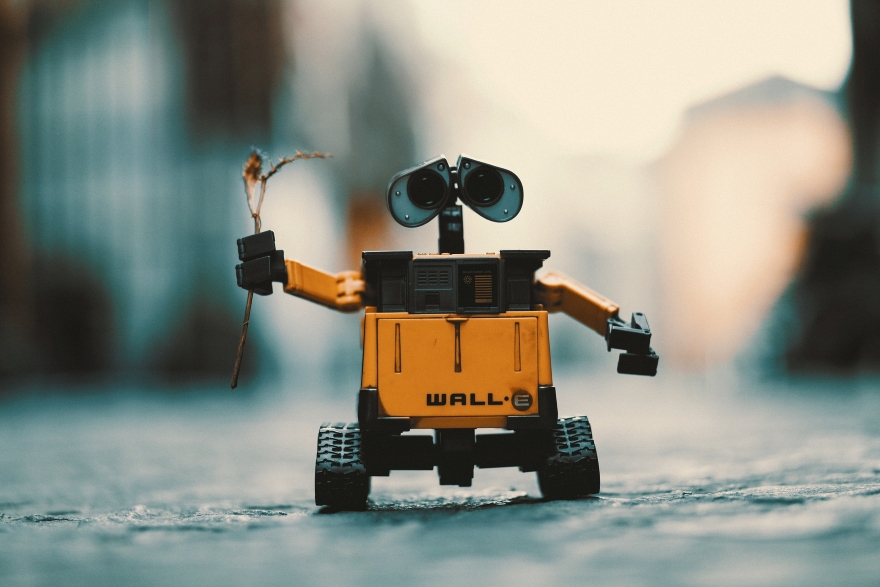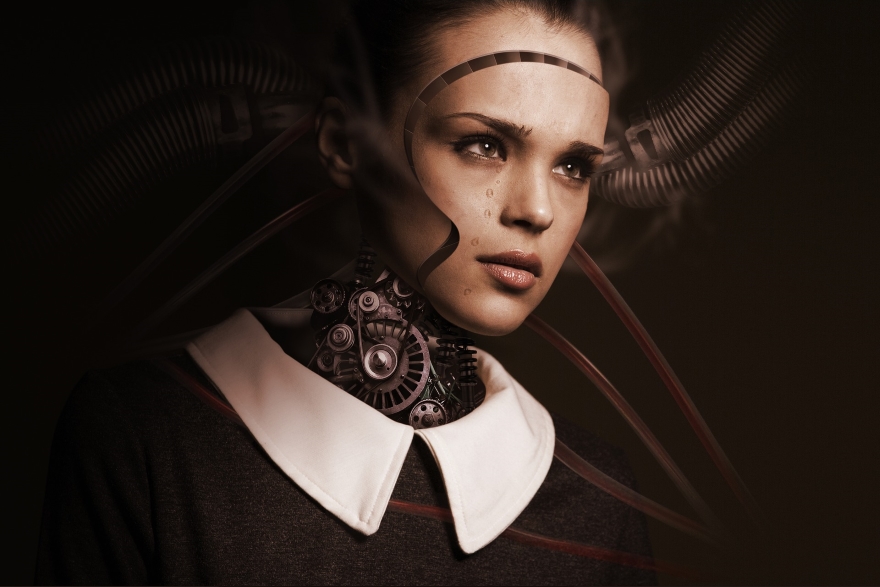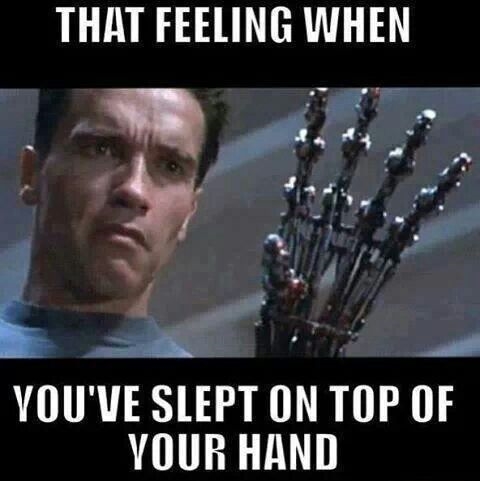When I listen to what people say about the future of human labor and how robots are going to take over our jobs, I’m often reminded of Arnold Schwarzenegger in the “Terminator” franchise. Yup, Hollywood has always been into this scary premise: The sweet little robots that you keep buying will eventually become ‘not so sweet’ (or to be more precise: androids) and will get rid of us all!
Well, it’s not only Hollywood who’s exploiting this modern-day fear. Social media trend-makers love it too. Every couple of months I come by super viral videos from big name robotics companies, starring animal-like robots, moving about in a convincingly natural way or even human-like robots lately. You don’t need to watch more than one or two of these, or to read more than a few of the more pessimistic journalists, to get a clear-as-day picture of the future. Robots are now being developed to draw animations, build houses, drive cars and do any other job that comes to mind. It sometimes feels like it’s ‘game over’ for humanity.
I am not sure about the distant future, and over the years I’ve learned that reality can go way beyond any imagination, but let’s talk about the near future.
Well, clearly we will be facing (and already are) a major change in the job market. We see news stories about autonomous cars that are jeopardizing taxi drivers’ jobs, and we all experience technologies that replace cashiers. These are just two examples. Specifically in the manufacturing industry, the job market will be affected by AI-based IIoT solutions for manufacturing optimization and automation. What does it mean? Are we really going to lose all of our jobs? What future jobs will we have in the manufacturing industry?
Winds of Change
Please note that I am sharing here my personal perspective that is based on what we see here, at Plataine (a developer of AI and IIOT-based manufacturing optimization solutions). In short, while I do agree that major changes are just around the corner, I truly believe that humans in the ‘industry 5.0 era’ are a long way from becoming obsolete. Our future industrial working environment, as many studies show, is in fact becoming a platform for creating new jobs and opportunities for human workers, maybe more than ever before.
The future for industrial human workers exists
Very well, you probably say, but even if what Hollywood shows us is complete hogwash (obviously), and even if those fancy robots on YouTube are far from being dangerous (to us humans being employed), this is not the real issue at hand.
The real issue is the advancement of AI as a whole, and the threat it poses to the global manufacturing workforce. It’s not about Hollywood drama or social media trends. Soon – that is, in the near decade or two – professional drivers will be replaced by self-driving cars. That’s a near certain fact, you say. How can we be sure that all industrial human workers don’t go the same way?
The simple answer is: no one can be sure of anything. After all, it’s the 21st century. However, the more we learn about AI-human collaboration, the more we see that the pessimism surrounding the future of jobs is mostly exaggerated. That being said, it’s important not to be overly naive: automation is definitely going to replace workers, or change the demand for some jobs as we see it today.
A recent OECD research estimates that 14% of jobs are at high risk of automation, and when we go deeper into their projections, we see that certain jobs are at a higher risk than others. Indeed, some ‘routine-like’ jobs in sectors such as agriculture or plain manufacturing, especially ones that are prone to automation, are more vulnerable.
But still, jobs that call for ongoing professional training are less likely to be replaced by robots in the near future. We’re entering the “lifelong learning” era, as experts call it. The acquisition of skills and knowledge is no longer confined to a set time and place (oftentimes, during our early twenties), but rather throughout one’s entire career.
Human-Level AI? Nope, That’s Not The Risk
You might pose a legitimate question: if Plataine’s AI systems are that sophisticated, then how come the world is still in need of human manufacturing workers? Well, the simple answer is that while being highly advanced, our industrial AI system – like any other AI system – is designed to optimize specific tasks and help people make better decisions. When we talk about industrial IoT, we usually refer to highly complex systems, making an infinite number of tiny calculations each second, all aimed at optimizing processes on the factory floor and elsewhere (you can learn the ins and outs of what Plataine is doing here).
We’re proud of Plataine’s systems and applications, as they’re highly valuable for any factory who’ll be deploying them, but they’re still (and will continue to be) designed to support humans in their daily decision-making process rather than replace them entirely.
In other words, no matter how state of the art and sophisticated AI systems we become, not all of them are aimed to replace human beings.
Most experts say it’ll take decades for AI companies to achieve that coveted AGI (Artificial General Intelligence) level, if they ever get there at all. Simply put: even though technology can improve almost any parameter of your factory workflow, it isn’t going to replace your human teams.
New technologies trigger new industries that bring new jobs
A counter-intuitive fact about the impact of new technologies on the size of human workforce is that new technologies can actually bring with them a demand for new jobs. If you take a good look at the history of technological revolutions, like the Industrial Revolution in the 1800s or the more recent digital revolution, you’ll find that while there’s always the fear of a rise in unemployment rates, new professions are usually invented, new industrial fields that support emerging technologies evolve, and new kinds of knowledge create new opportunities for generations to come.
Many professionals agree that we’re in a similar situation today. No doubt, the automation revolution is likely to take a few industries by storm, especially ones where the skill set needed to get the job done is rather limited. As mentioned above, human workers in manufacturing are about to experience a rough period. But at the same time, new roles in manufacturing will be invented, and people who are ready to take the challenge of ongoing training are almost certain to find a job. Let’s take a look at some numbers:
- A recent report by the Asia Development Bank (ADB) says: “The adoption of robotics and other connected systems stimulated higher productivity and economic growth, creating 134 million new jobs”
- A 2018 report from the International Federation of Robotics (IFR) states that: “one million industrial robots currently in operation have been directly responsible for the creation of about three million jobs in industries such as consumer electronics, food, solar and wind power, and advanced battery manufacturing.”
- And a study by the Centre for Development Studies in India has shown that in 2016, only 0.1% of industrial jobs were lost to robots.
Going over these numbers, it seems that the impact of industrial AI on the future employment of human workers is, surprisingly, positive. Demand for human workers in certain positions could even increase, as industrial IoT systems like Plataine’s are being adopted worldwide.
New kinds of human-AI collaboration
What’s the use in these systems if they won’t save the need to hire human workers, you ask. What ROI will they bring? Well, what if you could achieve much more using your existing workforce?
AI–human collaboration can lead to a new standard of production, capacity (throughput) and quality.
Take Google Glass for example, as used with an IIoT solution developed by Plataine (you can read a lot more about it here). Instead of carrying around papers and tablets, or wasting other employees’ precious time, shop-floor human workers can now get instructions, actionable alerts and recommendations displayed right onto their Google Glass, in real time. Workers are therefore able to concentrate their full set of skills on the task rather than sort through loads of information – something that Plataine’s systems do much faster anyway. Workers can therefore handle a lot more tasks. Besides, mass usage of smart glasses creates a new market. And overall, new markets brings with them new jobs. Think of the people in each manufacturing company that will be responsible for purchasing glasses, ensure their security, maintain them and more.
Before companies had PCs, we had no IT roles…
Changing the mix of what we do in our jobs
In 1997, Garry Kasparov, the then reigning world chess champion, lost a six game match to a chess software called Deep Blue. It was the first time in history a world chess champion surrendered to a machine, and it was a real blow. At first, Kasparov took the loss to heart. He saw it as a defeat for humanity as a species, as if his role as a human chess player has come to an end. But years later he changed his mind completely. He began to see the great value of human-AI collaboration. in 2017 he even published a book called Deep Thinking, in which he extensively explores the potential of human-AI collaboration .
Many experts wholeheartedly agree with Kasparov. Prof. Lynn Parker, an AI expert and Director of the Distributed Intelligence Laboratory at the University of Knoxville, Tennessee, says: “People worry about their jobs going away, and I think the thing is jobs consist of a lot of sub-tasks, and some of those tasks might get automated. That might mean the mix of things we do in our jobs changes, but we’ll still have lots of value as people.” This echoes my point of view quite well. Certain jobs will disappear, particularly the more repetitive ones, and those that are easily automated. But on the other hand, we’ll have more efficiency, better safety, and higher profitability, and these in turn will create more opportunities for humans, oftentimes in the very same factories
Behind You, Terminator
We should leave “Terminator” behind, for now, and learn to trust technology (again). The concerns many employees have about an AI takeover are not unreal, but sometimes they prevent us from seeing reality as it is: AI and automation-based technologies for industrial purposes will probably ‘kill’ some traditional jobs, but at the same time will create a demand for new kinds of jobs in which human capabilities have an inherent advantage over AI. That should guide us while we prepare for what is near to come.












